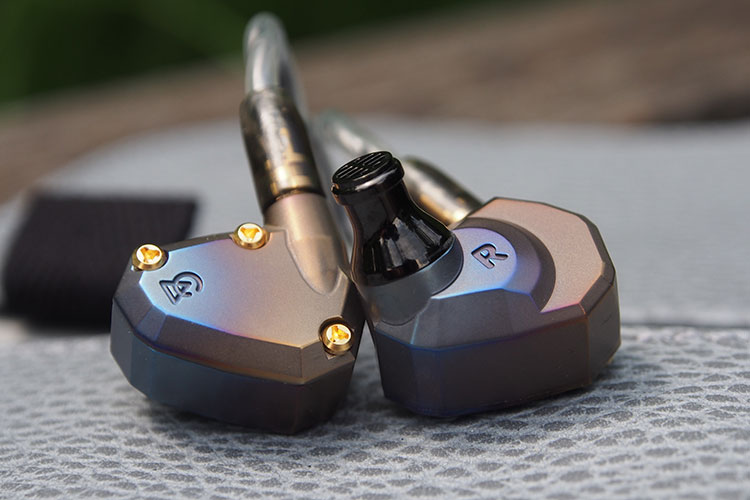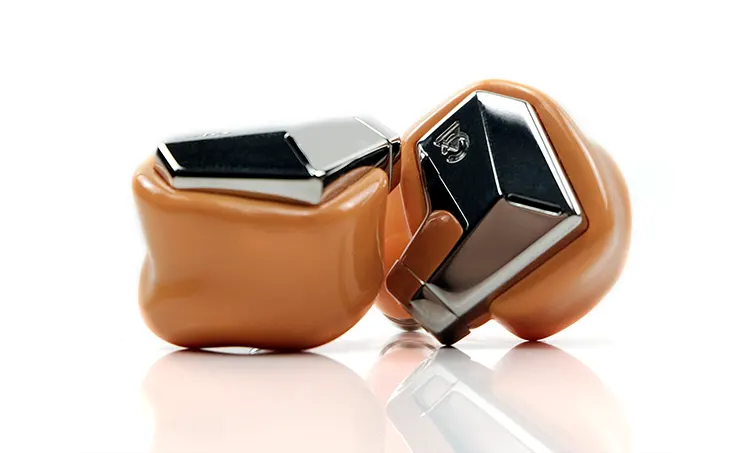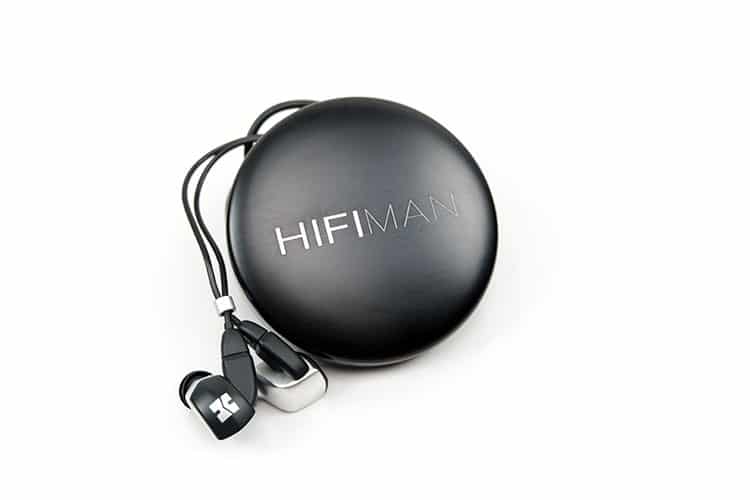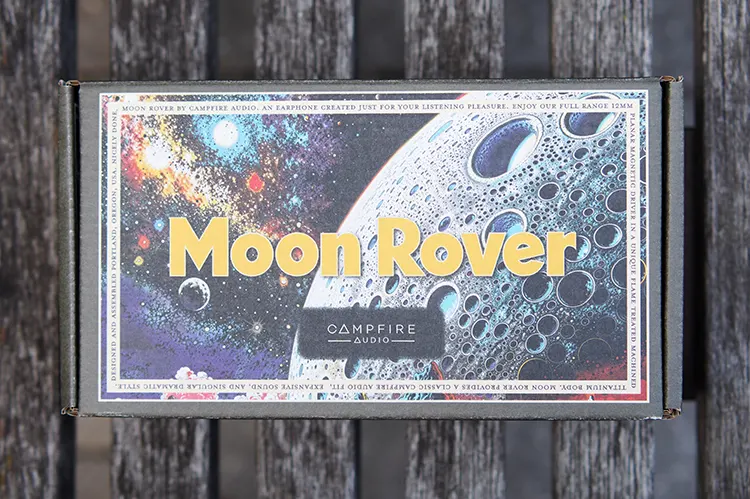Select Comparisons
Campfire Audio Supermoon
Technical
Both Moon Rover and Supermoon contain planar magnetic drivers. While the Supermoon uses a large 14mm driver, the Moon Rover installs a new, smaller 12mm.
While they both have stainless steel nozzles, the build between the two is otherwise entirely different with the Moon Rover bringing back their classic angular shell design, and in titanium no less. The Supermoon features 3D-printed acrylic in a larger but more ergonomic shape.
Neither share T.A.E.C. nor any other common Campfire Audio tech, except for the copper/beryllium MMCX tech that is standard across the lineup. The Solid Body Design philosophy used in the Chromatic Series is present on the Supermoon, but not applicable to the Moon Rover.
Sensitivity is 94 dB @ 1kHz on both. The Supermoon’s impedance is 15.5Ω @ 1kHz compared to the Moon Rover’s 22.5Ω@ 1kHz.
Design
The Moon Rover’s shell design can be traced back to the Orion, released in 2015, and has been smoothed and refined over the years. It is smaller and more compact than the custom-inspired, 3D-printed acrylic shells of the Supermoon.
Both models use stainless steel for the nozzles and contain Campfire’s beryllium copper MMCX ports, but the similarities end there. The Moon Rover’s black PVD-coated nozzles are longer than the Supermoon’s chromed steel nozzles and use a different lip design that isn’t as effective at holding tips of various styles.
The Supermoon’s 3D-printed acrylic shells are flawlessly constructed, but the same can be said for the Moon Rover. While I do not doubt the Supermoon’s longevity, titanium is infinitely tougher than acrylic.
The visual appeal of both models is strong, with the Supermoon’s flashy chromed steel back and colorful cable hardware catching glimpses. The Moon Rover is more subtle, but also more nuanced.
The flame-treated shells look good from a distance but get in close and spin them around to be rewarded with colors shifting from blue-grey to green to olive-grey. It’s quite stunning.
The Supermoon is comparatively huge which will limit who it can fit. It fills my outer ear resulting in a stable, comfortable fit and the vented design also ensures no pressure build-up on insertion.
The Moon Rover is a lot smaller and while not as stable, I haven’t had any issues with discomfort or an unreliable seal. The biggest problem is that the shell is unvented which can cause discomfort since pressure will build up on insertion.
Isolation from both is above average with the Moon Rover having an advantage. Neither requires a boost in volume to listen at comfortable levels in noisy places, and both benefit from foam tips if you want even more isolation.
Bass Performance
Bass on the supermoon is more emphasized through mid and sub-bass regions giving it a warmer more boisterous presentation. It provides a more visceral experience than the Moon Rover and better replicates deep notes.
Texturing is excellent on both models, but the Moon Rover has an edge. Thanks to a drop in warmth compared to the Supermoon, and more pronounced micro-detail, the Moon Rover pulls more information from tracks.
The Moon Rover’s smaller driver is also quicker and tighter. While the bass presentation isn’t as boisterous, attacks are more aggressive with a faster decay, all with more control.
Mids Performance
The Moon Rover’s midrange is more forward and pronounced. The way it interacts with the bass and treble regions is more even and balanced, leaving no particular region more emphasized and prominent than the other.
While the midrange on both models is detailed, neither is analytic in its presentation. The Supermoon has the edge thanks to a leaner presentation highlighting the minute details that are less prominent through the Moon Rover.
Sibilance is better handled through the Moon Rover. The Supermoon’s presentation can be thinner, sharper, and sizzle-prone, resulting in a less natural output.
Treble Performance
The brilliance region of the Supermoon is more emphasized. This gives it a brighter, more sparkly, and more energetic presentation than the Moon Rover, which combined with the bombastic low end gives it a signature more in line with the U or V-shaped signatures fans of the brand expect to find on some models.
This results in the Moon Rover sounding smoother and less edgy. It is also less fatiguing, especially at higher volumes where the Supermoon’s bass and brightness can tire the ears after a period.
Overall detail levels go to the Supermoon, helped by a thinner note presentation. While it provides more detail in general, the Moon Rover’s note presentation is tighter and better controlled, with more precision to its attack and decay qualities.
While the Moon Rover is less detailed and energetic, it is smoother and more refined with a better balance between presence and brilliance regions.
Staging Performance
Both have a reasonably average soundstage with the Moon Rover having a slight advantage. Its default vocal positioning is just inside the ear, with the treble and bass appearing around the same plane which suits the balanced tune of the Moon Rover
The default vocal position of the Supermoon is similarly placed, but the bass and treble appear closer to the ear. This shrinks the stage presence but works with the more vibrant in-your-face nature of the Supermoon’s tuning.
Both image equally well with off-center accuracy being a strong point for both models. Channel-to-channel movement is precise and nuanced, making it easy to track sound and effects as the move.
Layering is excellent on both models but is slightly more apparent on the Supermoon. The Moon Rover better separates individual instruments, though the differences are minor.
Hifiman RE2000 Silver
Technical
Where the Moon Rover utilizes planar technology for its driver, the RE2000 Silver uses a 9.2mm dynamic. Setting it apart from other dynamic drivers is the use of nano-particle coatings that, when varied in pattern and thickness, can theoretically be used to control the qualities of the sound output.
Campfire Audio makes a considerably stronger showing when discussing the build and materials. The RE2000 Silver did away with the gold-plated brass of the original for aluminum, which reduced the body weight considerably.
Compared to the titanium and steel of the Moon Rover, the aluminum and plastic construction of the RE2000 Silver is less premium. Fit and finish is a large step down too, with the alignment of the stalks holding the 2-pin ports varying slightly.
This reduced quality also applies to the RE2000 Silver’s cable which, while containing silver wiring, feels unexpectedly bland and fragile for something in this price range. The sheath below the y-split is thick and resilient, while above it becomes thin and tangly with ineffective strain relief.
The Moon Rover has a sensitivity of 94dB compared to the RE2000 Silver’s 103 dB. The Moon Rover’s impedance is 22.5Ω compared to the RE2000 Silver’s 60Ω.
Design
Campfire Audio’s shell design is legendary at this point and is oft copied but never matched. The look is memorable, customizable, comfortable, and genuinely iconic.
The RE2000 Silver is good-looking enough but has an awkwardness to it. The stubby body, short nozzles, and unusual nozzle angle combine with a plasticky build and subpar cable to make an underwhelming-looking product.
The silver and black create a nice contrast and look fine, but that’s it. For a product at this price point, the design should have had more attention paid to it.
That carries over to the ergonomics too. I have never had issues wearing the RE2000 Silver, but doing so has never felt natural, unlike the Moon Rover.
The tubby body and stubby nozzles, along with the unergonomic nozzle angle, make for an earphone that fits, but mainly because it’s even smaller and lighter than the Moon Rover. It sits in place and is comfy enough, and I rarely need to adjust to regain a seal, but it doesn’t feel as secure as it should.
Passive isolation is much better on the Moon Rover. The sealed, more form-fitting design better blocks incoming noise than the RE2000 Silver’s vented, lightly fitting shells.
Bass Performance
Bass is similarly well-extended on both earphones with the Moon Rover having a small edge. While the emphasis is similar in the mid-bass region, the warmer-leaning RE2000 Silver provides more sub-bass emphasis despite an earlier roll-off and generally produces a more visceral experience.
The Moon Rover’s planar driver is quicker and produces tighter notes, but the RE2000 Silver provides more punch on the initial impact. The Moon Rover’s driver has a snappier decay, giving it an advantage during congestion.
While the RE2000 Silver’s unique dynamic produces plenty of texture, the 12mm planar in the Moon Rover produces even more.
Mids Performance
The midrange of the Moon Rover is better balanced with the bass and treble. This gives it a more even presentation than the RE2000 Silver, highlighting Hifiman’s more u-shaped tune.
While neither model is sibilant, the RE2000 Silver is more forgiving of tracks with a hot midrange master. It does a better job of reducing harsh esses and tees, and like the Moon Rover doesn’t add it where it doesn’t already exist.
Neither model is overly detailed in the mids, with each providing plenty of information without crossing into analytic territory. The Moon Rover is clearer and more coherent, providing additional texture over the RE2000 Silver.
Treble Performance
The RE2000 Silver provides less extension into the upper ranges and focuses on the presence region. The result is a clear, well-defined sound, yet one that is still less crisp than the Moon Rover.
The Moon Rover’s brilliance region emphasis results in a more vibrant, sparkly signature, which supports its more reference-leaning tuning. The result is that the RE2000 Silver is less fatiguing, though this mainly applies only at higher volume levels since neither model is harsh on the ear.
Notes from the RE2000 Silver are less tight than they are from the Moon Rover. This results in mild displays of splash that are absent from Campfire Audio’s planar driver.
Staging Performance
Hifiman’s RE2000 Silver has a wider, deeper stage with vocals set further from the ear by default. The energy of the Moon Rover’s brilliance region keeps it from sounding small, but the sub-bass floor of the RE2000 Silver keeps it ahead in terms of overall expansiveness.
Moon Rover produces sharper, more precise imaging, though the difference isn’t drastic. With either model, movement from channel to channel can be followed easily and accurately.
Layering and instrument separation are where the Moon Rover’s planar driver takes a clear lead. Tracks are denser and more layered and individual instruments are easier to pinpoint and analyze.
My Verdict
Campfire Audio’s dive into planar magnetic driver technology has been successful. The Supermoon provides a vibrant signature that moves one of Campfire Audio’s more popular bright and bassy tunes in a positive direction with a more refined and technically capable sound.
The Moon Rover embraces this new tech but through a very different tune. The new 12mm driver improves upon the neutral-leaning sound of past offerings like the Holocene and Ara while offering a smoother experience and better low-end extension than either of them.
It also honors Campfire Audio’s past by bringing back a classic shell design with a material we’ve only seen them use twice. Before the Moon Rover, only the Ara and super-rare Andromeda Gold: Titanium featured a titanium build.
While the packaging is simple but intriguing thanks to the trippy design, and the included accessories are mostly excellent, there is still room for improvement. Specifically, more tips of a greater variety, such as bi- and tri-flange sets, would be welcome.
If you can get your hands on a set of the Moon Rover, you’ll be treated to an exceptionally well-tuned product with a unique look and durable build quality. I truly hope they release a mainline model with this driver and tuning, possibly with the updated shell and Timestream cable… one can dream.
Campfire Audio Moon Rover Technical Specifications
- Frequency Response: 5Hz–20 kHz
- SPL: 94 dB @ 1 kHz: 66.37 mVrms
- Impedance: 22.5Ω @ 1 kHz
- Less than 1% Total Harmonic Distortion







